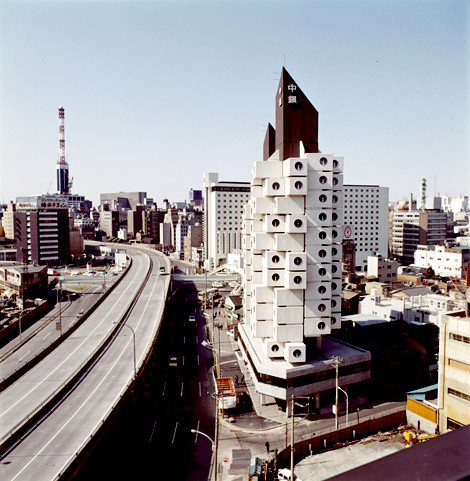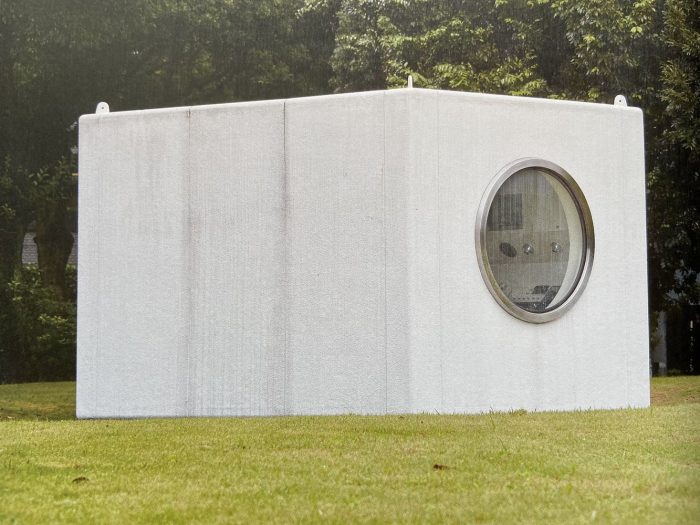
- Permbajtja
- prev
- next
- prev
- next
The icon of Metabolist architecture, is being demolished!
Today's article was inspired by the recent news of Nakagin Capsule Tower demolishment. An icon of the Japanese Metabolist architecture movement born after World War II, which merges the idea of, megastructures, brutalism with those of organic biological growth. (Imagine the organic growth of a tree).

© Arcspace Nakagin Capsule Tower _ Kisho Kurokawa
Architect Kisho Kurokawa designed this iconic apartment block in 1972 in Tokyo's Ginza district. The project was based on the idea that the capsules, which would be replaced in the span of 25 years, but in fact until today they have never been replaced.
The Nakagin Capsule Tower consists of 11 and 13-storey tower cores with modular pods sprouting from its side that were intended to be replaced as if the building was a living organism.
The capsules were prefabricated and could be used as studios or residences. Designed both in structure and scale of a container of ships they included a bed, toilet, various appliances, as well as a color TV and work desk together a calculator. The cost in 1972 was equivalent to that of a luxury car.
The idea that inspired the capsule tower was to renew the past. This was also the first model of a recyclable and sustainable architecture. A project which aimed at the symbiotic relationship between nature and architecture as a pioneer of Metabolist architecture, which aimed to create adaptable and replaceable buildings. (In fact time showed it was not a symbiotic relationship)

Kjo ndërtesë përfaqësonte një moment historik të rëndësishëm të arkitekturës së pasluftës. Dizajni i saj mishëron idealet urbanistike dhe sociale të Metabolistëve: një qytet fleksibël me një sistem të përshtatshëm ndaj nevojave të një shoqërie e cila ndryshon vazhdimisht dhe me ritme të shpejta!
This building represented an important historical moment of post-war architecture. Its design embodies the urban and social ideals of the Metabolists: a flexible city with a system tailored to the needs of a society that is constantly changing!
On April 12 2022, began the demolition of this building, that for architects and architecture admirers it is a bitter moment. The main reason for its destruction has to do with its of the structure of concrete and steel.
Lack of funds resulted in the degradation of the capsules as a result of their non-replacement. Water leaks and damp led to the abandonment of most of the capsules. The presence of asbestos presents another health risks related to cancer, making this structure totally unhabitable.
 Courtesy of Nakagin Tower
Courtesy of Nakagin Tower
Problems such as the resistance to continuous earthquakes and the lack of hot water supply for more than 10 years, led to the degradation of this structure which was actually supposed to be renewed every 30 years.
It is truly sad that such icons representing key moments of architecture, in the absence of attention and care degrade up the point where demolition is served as the only solution.
The fate of the Nakagin Capsule tower has been shared by other buildings such as the Robin Hood Alison and Peter Smithson complex or the National Theater in Tirana.
 Courtesy of Nakagin Tower
Courtesy of Nakagin Tower
We think that well-thought-out interventions can bring to life these buildings that carry cultural and historical value and represent an important part of the architectural identity of a certain period.
Would you agree that we should make more effort to preserve by revitalising these iconic building or that we should create space for the “NEW”, that tomorrow will not be New anymore. ..( just like Nagakin tower )?!
Sources : Dezeen. Britannica, Design Build, Iconic Houses, Archdaily, Architizer,